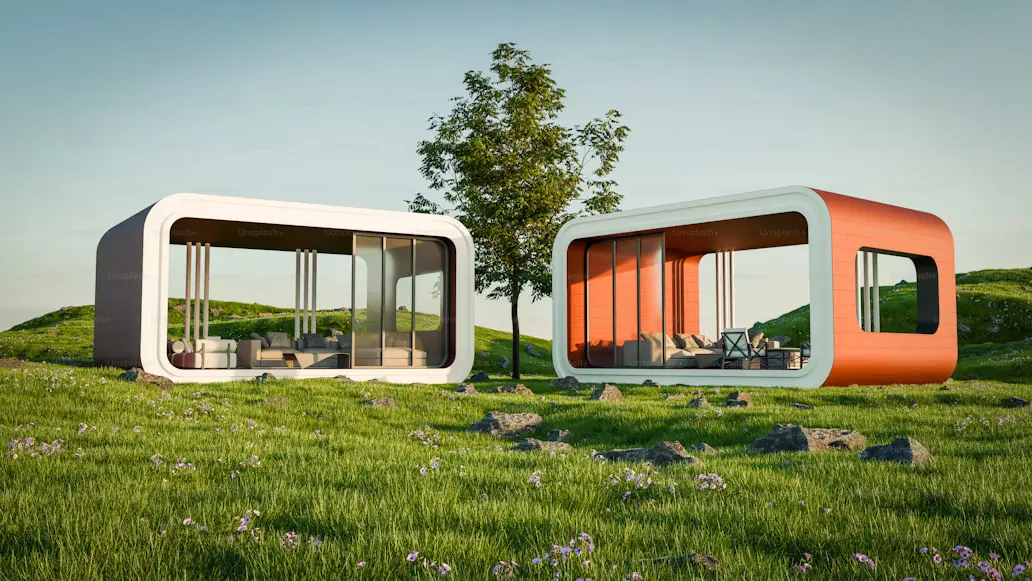Introduction
The concept of the “smart home” has shifted from futuristic novelty to mainstream expectation. As devices become more connected, homes with smart technology are influencing the real estate market in significant ways. For homeowners, sellers, investors and real-estate professionals, understanding how smart homes impact value is no longer optional—it’s essential. This article examines why smart-home features are increasingly sought after, how they affect property value, which upgrades deliver the most impact, and what pitfalls to watch.
What defines a “smart home” in real estate
When we speak of a smart home in a real-estate context, we mean a residence equipped with interconnected devices and systems that automate, monitor or manage functions such as climate control, lighting, security, appliances and connectivity. Examples include smart thermostats that learn usage patterns, integrated home-security systems with remote monitoring, smart lighting and shading systems, voice-activated assistants and often an underlying, unified platform that ties the components together.
Because real-estate buyers and agents increasingly expect homes to deliver more than static features, the presence of these technologies can differentiate a property. As one industry note puts it: homes loaded with IoT devices are being seen as higher value because buyers understand they will “better enjoy the house” and live more conveniently.
Why smart-home features influence property value
Buyer demand is changing
Today’s homebuyers—particularly younger generations—are tech-savvy and often expect modern conveniences built into the home. According to one source, in markets where technology is more mature, up to 77 % of buyers are willing to pay more for a home that offers smart features. The logic is straightforward: convenience, efficiency and security matter.
Energy efficiency and cost savings
Smart home technologies often deliver tangible utility savings: smart thermostats, efficient lighting, energy-monitoring systems and connected appliances can reduce running costs. Buyers value lower ongoing expenses. According to an article, devices such as smart thermostats and lighting systems “make properties more desirable and valuable” because of cost savings.
Security and modern lifestyle appeal
Security systems today go beyond a simple alarm—they can include smart locks, remote cameras, integration with smartphones and alerts. That added peace of mind translates into perceived value. One study found that homes with advanced security features could add up to 5 % in value.
Speed of sale and market differentiation
Smart-enabled homes may not only fetch higher prices but also sell faster. An article notes that homes with smart technology have a “40 % greater chance of selling quickly” in competitive markets. Full Spectrum Technology Group When a property stands out in a listing, fewer days on market can reduce downward pressure on price.
Future-proofing the investment
As smart-home technology becomes more standard, homes that are already configured with integrated systems are better positioned for tomorrow’s buyer expectations. Properties that lag may face obsolescence or require retrofit.
How much value do smart features actually add?
Quantifying exactly how much value smart features add is tricky, but multiple studies offer ranges and context.
- One study estimated that smart home upgrades could add 3 to 5 % to a property’s value—for example, adding $15,000 to $25,000 on a $500,000 home.
- Another data point from a major provider found that the average “smart home” listing price in 2025 in the U.S. was approximately $1,224,763 versus $663,847 for a non-smart home—a near doubling.
- A more cautious interpretation notes that correlation does not imply causation: higher-value homes are more likely to already have smart features. One analysis said the large premium probably reflects overall home quality rather than the “smart” label alone.
In practical terms: adding key smart features may raise value somewhat—but only if those features align with buyer expectations, market context and are implemented sensibly.
Which smart upgrades deliver the best return?
Not all smart devices are equal in impact. Some upgrades tend to drive more value than others.
1. Climate control and energy management
Smart thermostats and integrated HVAC control are among the highest-value smart upgrades because they deliver cost savings and are widely understood by buyers. One article reported these added approximately 3 % to value.
2. Smart security systems
Given the importance of safety, homes with pre-installed smart locks, cameras and monitoring systems generally score well with buyers. This category is often cited as adding up to 5 % value.
3. Lighting, shade, automation and integration
Smart lighting, motorised blinds and whole-house automation may appeal more in luxury segments than in entry-level homes. While they enhance the “wow” factor, the ROI may be lower than foundational upgrades. One source warns that the premium may not always be justified unless well-integrated.
4. Appliances and connected ecosystem
High-end homes may benefit from integrated appliances and full smart ecosystems. However, excess specialty tech may deter some buyers who are concerned about complexity, obsolescence or maintenance.
5. Market-specific fit and buyer profile
The best smart-home strategy depends heavily on local market demographics and buyer expectations. In tech-savvy regions, smart features may be expected; in other markets, they may be less valued or even ignored. One survey found that 62 % of Americans believed smart features increased resale value—but this varied by region.
Implementation tips for homeowners and sellers
For homeowners thinking of upgrading, or sellers preparing a listing, here are key considerations to maximise benefit.
• Prioritise integration over gimmicks
Investing in bits and pieces may not deliver full value. Buyers prefer systems that work together and are user-friendly rather than a collection of incompatible devices.
• Focus on features that deliver real benefit
Ask: Does this upgrade reduce costs, improve security or simplify living? Avoid spending heavily on features that only appeal to niche buyers.
• Match the upgrade level to the market
In a mid-priced suburban home, a smart thermostat and security system may suffice. In luxury markets, expect deeper integration (automation, lighting, shading, full-house connectivity). Use data on local smart-home premiums before overinvesting.
• Ensure ease of use and documentation
Complex systems that require heavy maintenance or a learning curve can deter buyers. Make sure smart home systems are intuitive, professionally installed and clearly documented. Some buyers may feel overwhelmed.
• Keep longevity and upgrade path in mind
Technology evolves rapidly. Choosing systems that are modular or upgradable may help protect your investment. Buyers worry about obsolescence.
• Marketing smart features in the listing
When selling, highlight smart home features as part of the value proposition: cost savings, security, convenience, future-proofing. But avoid overclaiming: make sure the features work and are demonstrable.
Risks and caveats to consider
While smart-home technology has benefits, there are risks and limitations.
- Over-investment risk: Spending heavily on advanced smart systems may not yield a proportional price increase, especially in less tech-driven markets.
- Privacy and security concerns: Many buyers remain uneasy about data privacy, hacking or dependence on networks. One study found 60 % of potential buyers cited privacy concerns.
- Compatibility and maintenance: Smart devices can become obsolete, unsupported, or fail to integrate well. Poorly implemented systems may reduce appeal.
- Local market variance: The uplift from smart features varies based on geography, buyer profile and competition. What works in one market may not translate in another.
- Correlation vs causation: As noted earlier, more expensive homes are often smart homes—but upgrading a modest home with smart tech may not automatically double its value.
What this means for real-estate stakeholders
For homeowners and sellers
Smart home features can be a meaningful value-add and a differentiator in market listings—but the key is to choose wisely, focus on usability, prioritise features that matter to buyers in your market, and ensure the system is well-implemented. Underdelivering or overspending can erode returns.
For investors and developers
In multi-unit or rental portfolios, smart features can boost demand, reduce fees (energy/security) and increase rental premiums. Some reports show a premium of as much as 20 % in rent for smart-enabled units. Full Spectrum Technology Group Developers in luxury markets may find full-scale smart integration contributes to branding and higher price tiers.
For real-estate agents and appraisers
Understanding how smart-home features affect value and sale speed is becoming important. Agents who can credibly articulate how a property’s smart systems deliver value may have an edge. Appraisers must still evaluate features rigorously and not simply assume “smart” equals premium—context matters.
Looking ahead: the future of smart homes in real estate
The smart-home market is expanding rapidly. One projection puts the global value at over $338 billion by 2030. As IoT devices proliferate, buyers will increasingly expect homes to offer connected, responsive living environments.
In real estate, this means smart-home features will likely become standard rather than luxury. Early adopters will be rewarded with differentiation now—but in future, non-smart homes may lag in competitiveness.
However, the emphasis will shift from novelty to substance: cost savings, security, ease of use and system integrity will define value, not just marketing buzz. Smart homes that deliver meaningful living benefits—not flashy gimmicks—will deserve their premium.
Conclusion
Smart home technology is reshaping the real-estate landscape. From buyer demand to market expectations, homes equipped with well-integrated smart systems are commanding higher prices and selling more quickly. But the key takeaway isn’t “install everything” — it’s “install smartly.” Focus on upgrades that deliver clear benefits, match your market, and are executed cleanly.
If you’re planning to sell, invest, or develop property: start by auditing which smart-home features buyers value in your area. Make decisions based on data, not hype. And ensure you document and market the smart systems effectively.
To stay ahead, subscribe to our updates on real-estate trends and smart technology, or contact us to explore what smart upgrades will give your home the best return.










